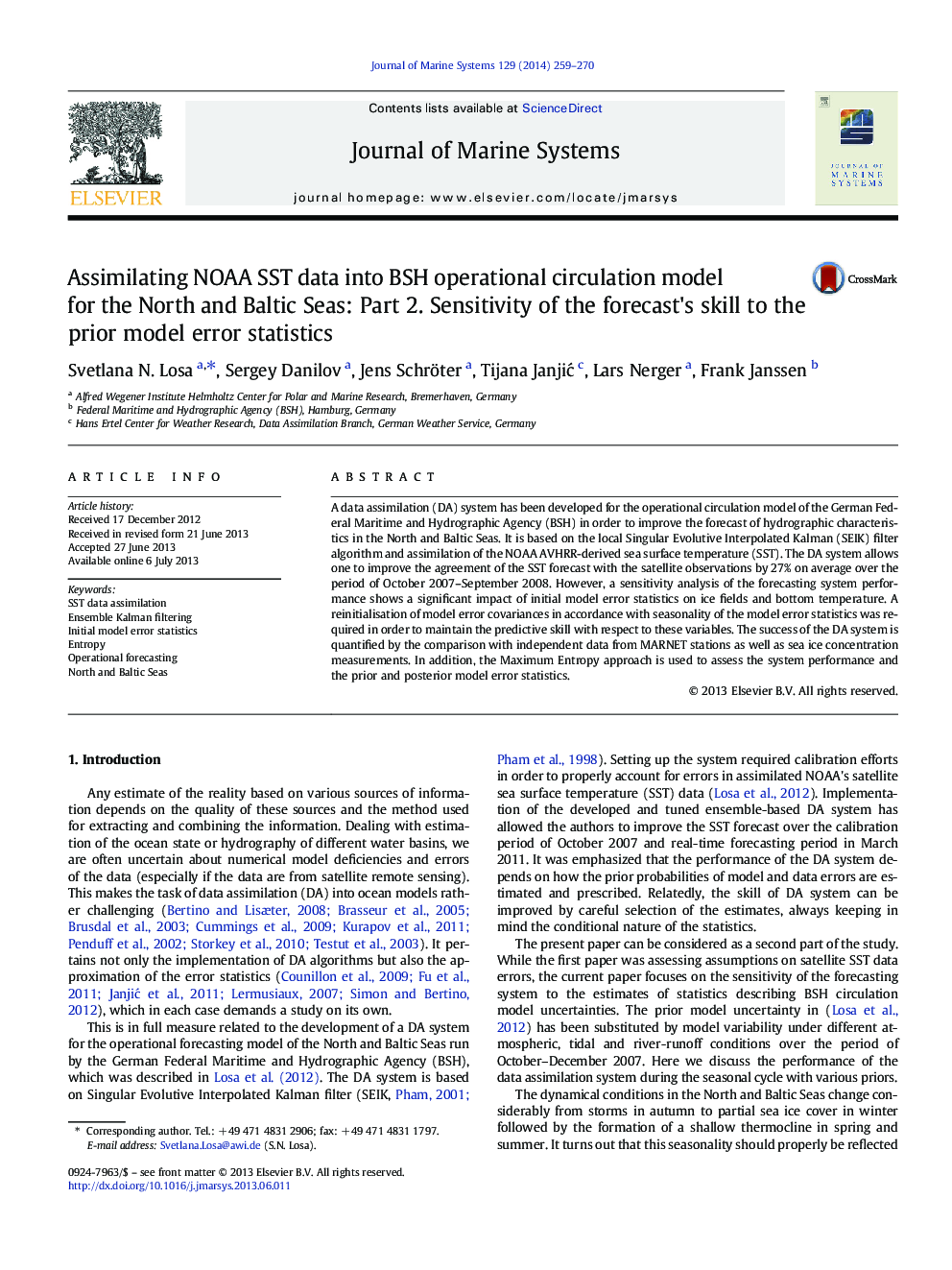| کد مقاله | کد نشریه | سال انتشار | مقاله انگلیسی | نسخه تمام متن |
|---|---|---|---|---|
| 6387145 | 1627300 | 2014 | 12 صفحه PDF | دانلود رایگان |

- Satellite SST data are assimilated into the operational BSH circulation model.
- The DA is validated over a one-year period for the North and Baltic Seas.
- The agreement between SST forecast and observations is improved by ~Â 27%.
- The quality of ice and bottom T forecast depends on initial error statistics.
- We use the Principle of Maximum Entropy to validate assumed error statistics.
A data assimilation (DA) system has been developed for the operational circulation model of the German Federal Maritime and Hydrographic Agency (BSH) in order to improve the forecast of hydrographic characteristics in the North and Baltic Seas. It is based on the local Singular Evolutive Interpolated Kalman (SEIK) filter algorithm and assimilation of the NOAA AVHRR-derived sea surface temperature (SST). The DA system allows one to improve the agreement of the SST forecast with the satellite observations by 27% on average over the period of October 2007-September 2008. However, a sensitivity analysis of the forecasting system performance shows a significant impact of initial model error statistics on ice fields and bottom temperature. A reinitialisation of model error covariances in accordance with seasonality of the model error statistics was required in order to maintain the predictive skill with respect to these variables. The success of the DA system is quantified by the comparison with independent data from MARNET stations as well as sea ice concentration measurements. In addition, the Maximum Entropy approach is used to assess the system performance and the prior and posterior model error statistics.
Journal: Journal of Marine Systems - Volume 129, January 2014, Pages 259-270